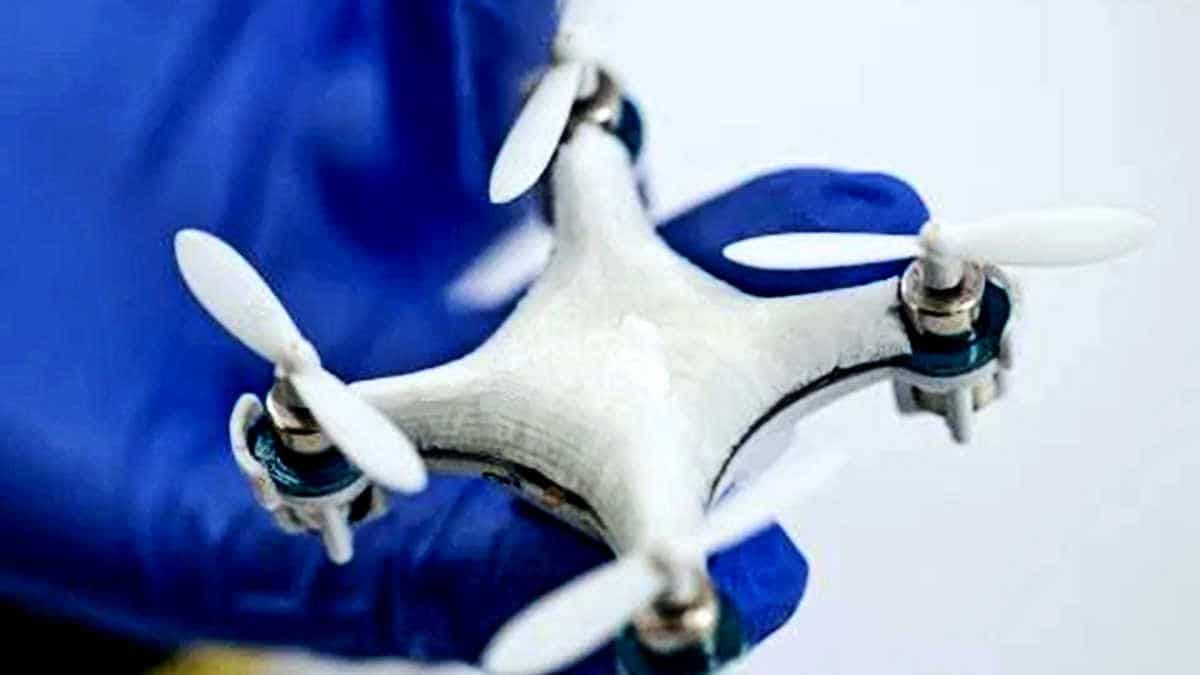A new biopolymer sensor can be imprinted like ink on virtually anything, such as gloves, masks, or everyday clothing, and it can detect bacteria, toxins, and hazardous chemicals in the environment. When the sensor detects these otherwise invisible threats, it glows thanks to an enzyme similar to that found in fireflies.
The biopolymer sensor, which is based on computationally designed proteins and silk fibroin extracted from the cocoons of the silk moth Bombyx Mori, can also be embedded in films, sponges, and filters, or molded like plastic to sample and detect airborne and waterborne dangers, as well as infection or cancer in our bodies.
The researchers showed how the sensor gives off light within minutes of finding the COVID-causing SARS-CoV-2 virus, anti-hepatitis B virus antibodies, the food-borne toxin botulinum neurotoxin B, or HER2, which is a sign of breast cancer.
“The combination of lab-designed proteins and silk is a sensor platform that can be adapted to detect a wide range of chemical and biological agents with a high degree of specificity and sensitivity. For example, SARS-CoV-2 and anti-hepatitis B antibodies can be measured at levels that approach clinical assays,”
said engineering professor Fiorenzo Omenetto, director of the Tufts University Silklab, where the bio-responsive materials were created.
Swappable Modular Sensing
Because the sensing element is modular, developers can swap in newly designed proteins to capture specific pathogens or molecules to measure while keeping the light emitting mechanism the same.
“Using the sensor, we can pick up trace levels of airborne SARS-CoV-2, or we can imagine modifying it to adapt to whatever the next public health threat might be,”
Omenetto said.
He points out that, while the sensor is still in the conceptual stage, the application to detect breast cancer is particularly intriguing. His team developed a proof-of-concept silicone bra pad that, when worn, can absorb secreted fluid, report HER2 hormone levels, and indicate whether breast cancer is present.
“While further development will be required to improve and clinically validate the assay, the opportunity for such diagnostics in everyday garments is certainly compelling,”
Omenetto said.
The sensors can take on an almost limitless number of configurations. To demonstrate this, the researchers built viral sensing drones with sensor material embedded in the fuselage.
The propellers direct airflow through the porous body of the drone during flight, which can be examined after landing. Drones, which reacted to airborne pathogens like SARS-CoV-2 in this example, could be used to monitor environments from a safe distance.
Molecular Glow-switch
David Baker, professor of biochemistry at the Institute for Protein Design at the University of Washington, developed the biopolymer sensor whose active component is a molecular switch made of proteins that function as a lock and key, but with a cover.
When a virus, toxin, or other target molecule approaches the cover, it binds to the switch and opens it. The combination forms a complete luciferase enzyme, similar to the enzyme that causes fireflies and glowworms to emit light. The glow becomes brighter as more virus, toxin, or other chemical binds to the sensor.
The molecular glow-switch is inside a mix of proteins using silk fibroin that comes from silk cocoons.
The silk fibroin is the inactive component of the biopolymer sensor, but it has unique properties such as the ability to be processed and manufactured using safe, water-based methods, as well as the remarkable versatility to be fabricated into various materials such as films, sponges, textiles, or dispersed onto surfaces via an inkjet printer. Furthermore, the silk fibroin stabilizes the molecular glow-switch, extending its shelf life significantly.
These biopolymer sensors represent a significant advancement over previous approaches to measuring pathogens or chemicals in the environment, which frequently rely on biological components that degrade quickly and necessitate careful storage. Furthermore, the sensors do not rely on electronic components, which can be difficult to integrate into flexible wearable materials.
Sensor Shelf Life
After storing materials embedded with SARS-CoV-2 sensors at 60 degrees Celsius (140 degrees Fahrenheit) for four months, the researchers found very little change in performance. The breast cancer sensor in the shape of a sponge was kept at room temperature for a year and still performed close to its original sensitivity.
“This means we can manufacture, distribute, and store these sensing interfaces for long periods of time without losing their sensitivity or accuracy and without the need for refrigerated storage, which is remarkable due to the fact that they are made of protein,”
said graduate student Luciana d’Amone, who co-led the project with Giusy Matzeu, a research professor at Tufts’ Silklab.
This approach has the potential to make sensors widely available in a variety of formats.
“For example, you could make surgical masks capable of detecting pathogens, package them in boxes, and use them over time just like conventional masks. We also showed that you can print the sensor inside food packaging to track spoilage and toxins. You can modify so many products that we use every day to include sensing, and store and use them as you normally would,”
said d’Amone.
The biopolymer sensors could be used for everything from personal and patient monitoring and infection control in health-care settings to environmental sensing in the home, workplace, military, and disaster settings, according to the research team.
Reference:
- d’Amone, L., Matzeu, G., Quijano-Rubio, A., Callahan, G. P., Napier, B., Baker, D., Omenetto, F. G. Reshaping de Novo Protein Switches into Bioresponsive Materials for Biomarker, Toxin, and Viral Detection. Adv. Mater. 2023, 2208556
